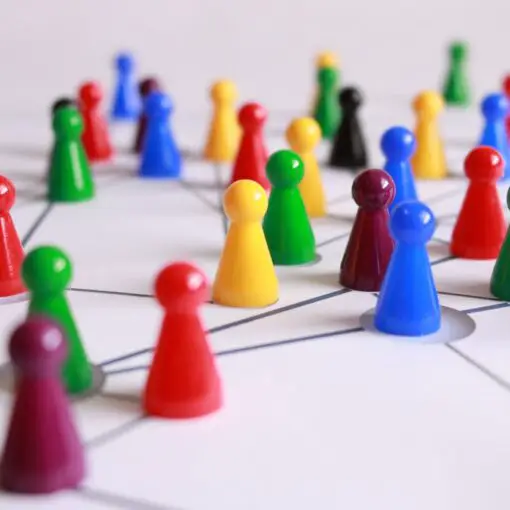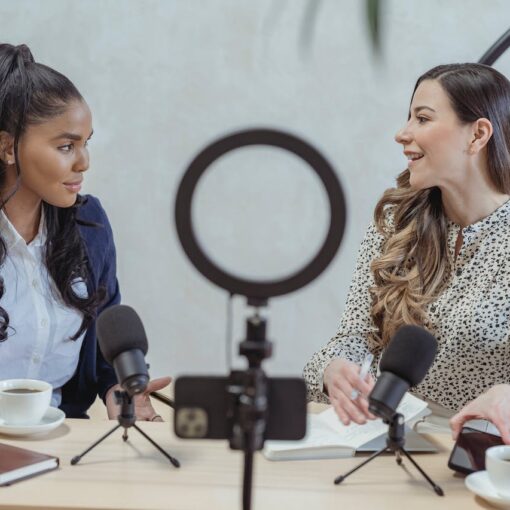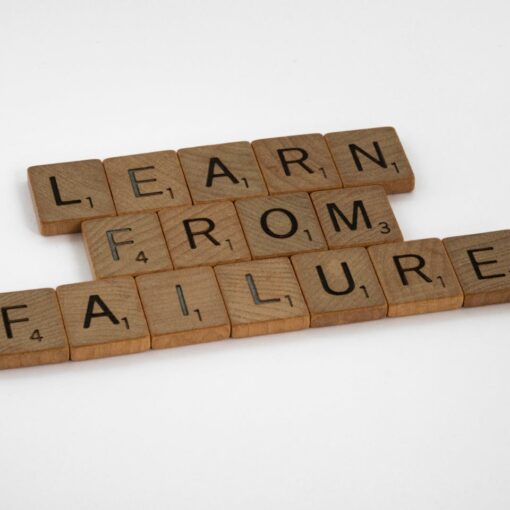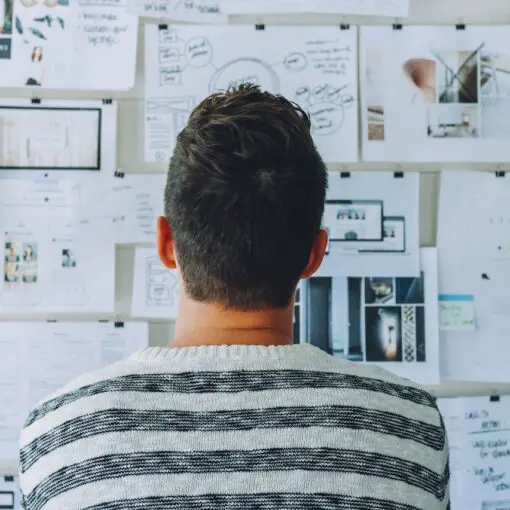In everyday life, cognitive biases can significantly impact our decision-making processes and overall perception of reality. These biases are mental shortcuts that can lead to systematic errors in thinking, causing us to draw incorrect conclusions or make irrational decisions.

Understanding and overcoming these biases is crucial to developing more logical and effective thinking patterns. This article explores 12 common cognitive biases and offers practical strategies to counteract them using critical thinking techniques. By recognizing and addressing these biases, individuals can enhance their ability to evaluate information objectively and make more informed decisions.
1) Anchoring Bias

Anchoring bias occurs when people rely too heavily on the first piece of information they receive, even if it is irrelevant.
For instance, if you see a shirt on sale for $50 after initially seeing it priced at $150, you might think it’s a great deal, even if $50 is still more than you would typically spend.
This bias can affect various decisions, from shopping to negotiations. People often make judgments and decisions anchored to the initial information.
To combat anchoring bias, it’s important to recognize its presence. Start by questioning the initial information and seek out multiple perspectives before making decisions.
Anchoring bias can also be reduced by delaying decisions until more information is gathered. Taking time to analyze different factors can help lessen the influence of the initial anchor.
Regularly practicing critical thinking skills can also aid in minimizing anchoring bias. Evaluate information critically and consider alternative viewpoints.
In business settings, team collaborations can help counteract anchoring bias. Diverse opinions can reduce reliance on a single piece of data.
For more tips on detecting and overcoming anchoring bias, check out this article by BetterUp.
2) Confirmation Bias

Confirmation bias is the tendency to favor information that aligns with existing beliefs. For example, if someone thinks left-handed people are more creative, they’ll likely notice and remember examples that support this idea. Other evidence may be overlooked or dismissed.
This bias can lead to poor decision-making because it limits exposure to differing perspectives. It can reinforce incorrect views and hinder learning.
To combat confirmation bias, individuals should actively seek information that challenges their beliefs. This can involve reading diverse sources and engaging in discussions with people who hold different opinions.
Another strategy is to question the reliability of preferred information. By evaluating evidence critically, it’s possible to form a more balanced view. Encouraging open-mindedness is crucial in minimizing the influence of confirmation bias.
Understanding that everyone has biases can also help. Acknowledging them is the first step towards addressing and reducing their impact. Being conscious of this bias allows for more objective thinking and better decision-making.
For more information, visit confirmation bias and its effects or ways to recognize and overcome it.
3) Hindsight Bias
Hindsight Bias is the tendency to believe that an event was predictable after it has happened. People often claim they “knew it all along” once the outcome is clear. This bias distorts their memory of their former opinions and judgments.
A common example is attending a baseball game and insisting you knew the winning team would win after the game ends. High school and college students often experience this cognitive bias when they think they initially predicted a test question correctly.
Hindsight Bias can be problematic. It can lead to overconfidence in one’s ability to predict events. This can affect decision-making, as people may not learn from past mistakes or may misjudge their forecasting abilities.
Overcoming Hindsight Bias involves acknowledging that this bias exists. Reflecting on past decisions and writing down predictions before outcomes can also help. This way, individuals can compare their initial thoughts with the actual results, promoting a more accurate self-assessment.
Hindsight Bias can impact learning and growth. Accepting that not all events are predictable is crucial. This helps maintain a realistic view of one’s decision-making skills and fosters better critical thinking.
4) Self-Serving Bias
Self-serving bias is a cognitive bias where individuals attribute their successes to internal factors and their failures to external factors. This means they might credit themselves for a team’s win but blame a bad outcome on external conditions.
This bias serves as a defense mechanism, helping protect self-esteem by deflecting blame for failures. For example, if a student does well on a test, they might say it’s because they studied hard. If they do poorly, they might blame the test’s difficulty.
In the workplace, this bias can affect team dynamics. Employees may take credit for successful projects but blame others when things go wrong. It can harm relationships and reduce trust within the team.
Recognizing this bias is the first step in managing it. Accepting that everyone has cognitive biases can help in overcoming it. Being mindful during evaluations of both successes and failures can make assessments more balanced and fair. Learning to accept personal responsibility and acknowledging contributions from others can foster healthier interactions.
For more insights on self-serving bias, including examples, visit this Business Insider article. This can help in understanding how this bias manifests in different scenarios.
5) Optimism Bias
Optimism bias is a cognitive bias where people believe that they are less likely to experience negative events and more likely to experience positive ones. This bias can make individuals think they are invincible or overly lucky.
A classic example is when people underestimate their risk of getting into a car accident. They believe it won’t happen to them, even if statistics suggest otherwise. This can lead to risky behaviors such as not wearing seat belts.
Optimism bias often motivates people to pursue goals ambitiously. By believing in positive outcomes, they may work harder and take more risks, increasing their chances of success. Optimism bias can act as a self-fulfilling prophecy.
It’s essential to recognize when optimism bias might be skewing your perception. Critical thinking can help balance this bias. One approach is to consider possible challenges or setbacks and prepare for them accordingly. By acknowledging potential risks, individuals can make more informed decisions.
Being aware of optimism bias can also improve problem-solving skills. By assessing both positive and negative outcomes realistically, individuals can create more balanced plans and strategies for their goals.
6) Negativity Bias
Negativity bias is a tendency to focus more on negative experiences than positive ones. This can shape how people perceive events and make decisions. For example, they might remember a single criticism more than multiple compliments.
This bias can affect mental health. People who have a strong negativity bias often feel more stress and anxiety. This happens because their minds are tuned to notice and dwell on negative outcomes.
To overcome negativity bias, one can use critical thinking strategies. Start by questioning negative thoughts and looking for evidence that supports or refutes them. This helps create a more balanced view.
Another way is to consciously focus on positive experiences. Keeping a gratitude journal can help. Writing down positive events every day makes them easier to recall.
Using these strategies can diminish the impact of negativity bias and lead to better decision-making. Steps like these can help anyone challenge their own biases and see a more complete picture of their experiences. For more tips on overcoming cognitive biases, check out this resource.
7) Bandwagon Effect
The bandwagon effect is a cognitive bias where individuals adopt behaviors, styles, or attitudes simply because others are doing so. It’s a tendency to follow the crowd, often ignoring one’s own beliefs or values.
This effect is deeply rooted in human nature. People feel a desire to conform to the majority as it provides a sense of security and acceptance.
It often leads to poor decision-making. For instance, a person might buy a product just because it’s popular, rather than evaluating its actual usefulness or quality.
This cognitive bias can be particularly influential in areas like politics, fashion, and technology. Seeing many others adopt a certain behavior or belief can make it appear more valid or correct.
To overcome the bandwagon effect, individuals can practice critical thinking. Questioning why they are making a choice and evaluating the pros and cons independently can help.
Awareness is the first step in combating this bias. By recognizing when they are being influenced by the crowd, people can make more informed and rational decisions.
Educational resources like Verywell Mind provide more insights on this cognitive bias and how to manage it. Understanding such biases can significantly improve one’s decision-making process.
8) Status Quo Bias
Status quo bias is a tendency to prefer things to stay the same. People often stick with their current situation, even if better options are available. This behavior is seen in various aspects of life, including finances, health, and workplace decisions.
One reason for this bias is loss aversion. People fear losing what they currently have more than they value potential gains. This makes them avoid changes.
Regret avoidance also plays a role. People worry about making a wrong choice and feeling regret. So, they choose to keep things as they are to avoid this possibility.
Another reason is the feeling of being overwhelmed by too many choices. Sticking with the familiar is simpler and less stressful.
In the workplace, status quo bias can prevent organizations from embracing new opportunities and innovations. Employees may resist changes that could improve efficiency or profit.
To overcome status quo bias, awareness is key. Recognizing that this bias exists can help individuals and organizations make more rational decisions. Encouraging a culture of change and continuous improvement can also help reduce the impact of this bias.
For more information, you can read about how the status quo bias affects decisions on Verywell Mind or how it impacts the workplace at Wharton.
9) Sunk Cost Fallacy
The Sunk Cost Fallacy is a cognitive bias that makes people continue investing in a losing proposition because of the resources already committed. This might include money, time, or effort.
People often think, “I’ve already spent so much; I can’t stop now.” This thinking ignores the reality that the invested resources cannot be recovered.
For example, a company might keep funding an unprofitable project because of the money already spent. However, future investments should be based on potential returns, not past costs.
To avoid this bias, individuals can reflect on their emotions and get an outside opinion. Looking towards future benefits rather than past investments can lead to better decisions.
Incorporating critical thinking helps. Ask questions like, “Is this still the best option?” or “What are the potential future gains?” This can shift focus from past costs to future outcomes.
For more details on the effects, visit The Decision Lab or BetterUp. Dealing with this bias lets people make more rational and beneficial choices.
10) Gambler’s Fallacy
The gambler’s fallacy is a common cognitive bias that people experience when they believe that past random events influence future random events. This belief is incorrect, as each event is independent.
For example, if a coin is flipped and lands on heads multiple times, someone might think it is more likely to land on tails next. This belief is false because each flip is independent of the previous ones.
This fallacy often appears in gambling settings. A person might believe that a losing streak in roulette must end soon, leading them to bet more money. This thinking can lead to poor decisions and financial losses.
Understanding the gambler’s fallacy helps individuals make better decisions. Recognizing that past events do not affect future outcomes is crucial. Instead of relying on faulty logic, one should focus on the actual probabilities of events.
To avoid this fallacy, people should educate themselves about the nature of randomness. By doing so, they can approach situations with a clearer mindset and make more informed choices. A deep awareness of how randomness works can prevent the influence of the gambler’s fallacy in decision-making contexts.
For more on this bias, visit Effectiviology’s overview or Statistics by Jim.
11) Availability Heuristic
The availability heuristic is a mental shortcut where people base decisions on recent information or examples that come easily to mind. This might lead to skewed judgments, as what’s most available in memory isn’t always the most accurate or typical.
For example, if someone recently heard about a plane crash, they might overestimate the risk of flying. Despite air travel being statistically safer than driving, the vivid memory of the crash sways their judgment.
This cognitive bias can influence various areas of life, including health choices and financial decisions. People might ignore long-term data and focus on memorable but rare events, potentially leading to poor choices.
Understanding the availability heuristic is crucial. By recognizing its impact, individuals can make more rational and balanced decisions. They should seek out broader information and avoid relying solely on recent or dramatic examples.
For those looking to reduce the effect of this bias, practicing critical thinking and questioning first impressions can help. It’s important to verify information from multiple sources to ensure a well-rounded perspective.
The availability heuristic reminds us that what’s most memorable isn’t always what’s most representative. Making decisions based on a wider range of information can lead to better outcomes.
12) Dunning-Kruger Effect
The Dunning-Kruger Effect is a cognitive bias where individuals with low ability in a task overestimate their competence. This happens because they lack the skills to recognize their own incompetence. They believe they are performing well when they are not.
People affected by this bias often have poor self-awareness. They are unable to evaluate their own performance accurately. This leads to overconfidence in their skills and knowledge.
To overcome this, one can improve meta-cognition. This involves thinking about one’s own thinking and learning processes. Developing self-reflection skills can help individuals assess their abilities more accurately.
Critical thinking plays a crucial role here. Questioning assumptions and seeking feedback are essential steps. This helps in gaining a realistic understanding of one’s capabilities.
Some practical steps include ongoing learning and seeking constructive criticism from others. Engaging in activities that challenge one’s current skill level can also be beneficial.
For more detailed insights, you can refer to this article on Verywell Mind.
Awareness of this bias can lead to better decision-making. It encourages continuous self-improvement and realistic self-assessment.
Understanding Cognitive Biases
Cognitive biases are patterns of thinking that can distort our perception and decision-making. Recognizing and addressing these biases is crucial for making more rational and objective choices.
Definition and Importance
Cognitive biases are systematic errors in thinking that affect decisions and judgments. They often occur when the brain relies on shortcuts, known as heuristics, to process information quickly. These biases can lead to irrational decisions and faulty reasoning.
Understanding these biases helps individuals make more informed and rational choices. By recognizing these mental shortcuts, one can actively work to mitigate their effects and improve critical thinking skills.
Why is it important? Because it can affect areas such as business, healthcare, and personal decision-making. Identifying and addressing these biases can lead to better outcomes in various aspects of life.
Common Examples
Several common cognitive biases affect daily thinking and decision-making:
- Confirmation Bias: Seeking out information that supports one’s own beliefs while ignoring contrary evidence.
- Anchoring Bias: Relying too heavily on the first piece of information received (the “anchor”) when making decisions.
- Hindsight Bias: Believing, after an event has occurred, that one would have predicted or expected the outcome.
- Availability Heuristic: Overestimating the importance of information that is readily available, often because it is memorable or recent.
Recognizing these examples can help in actively countering them. For instance, being aware of confirmation bias can lead to seeking out diverse viewpoints. Similarly, knowing about anchoring bias encourages considering a wider range of information before making decisions.
Role of Critical Thinking
Critical thinking plays a crucial role in recognizing cognitive biases and mitigating their impact. It involves essential components that foster clear analysis and significant benefits in making decisions.
Key Components
Objectivity: Critical thinking requires examining all sides of an issue without letting personal feelings or biases influence the judgment. This neutral stance helps in evaluating evidence logically.
Analysis: Breaking down complex information into simpler parts enables better understanding and assessment. Analyzing arguments and claims helps uncover hidden assumptions and faulty reasoning.
Evaluation: Assessing the validity and reliability of information sources is crucial. This practice ensures that only credible and relevant data is considered, which reduces the influence of biases.
Reflection: Thinking about one’s own thought processes allows individuals to identify and correct cognitive biases. Reflection promotes self-awareness and considers alternative viewpoints.
Benefits
Improved Decision-Making: By recognizing and addressing cognitive biases, critical thinking enhances the ability to make well-informed decisions. This leads to more accurate and fair outcomes.
Enhanced Problem-Solving: Critical thinking equips individuals with skills to tackle complex problems effectively. It encourages looking beyond initial impressions and exploring different solutions.
Better Communication: Clear thinking translates into clear communication. Critical thinkers can articulate their ideas more effectively and understand others’ perspectives, leading to improved interpersonal interactions.
Increased Creativity: Evaluating ideas critically doesn’t stifle creativity; it can actually enhance it. By questioning assumptions and exploring alternatives, critical thinkers often come up with innovative solutions.
Applying these key components and understanding their benefits helps mitigate the influence of cognitive biases, resulting in improved reasoning and outcomes.
Strategies to Overcome Cognitive Biases
Overcoming cognitive biases is crucial for making sound decisions. Key strategies include recognizing biases when they occur and using critical thinking techniques to analyze and mitigate them.
Awareness and Recognition
Recognizing cognitive biases is the first step in overcoming them. Individuals need to be aware of common biases like confirmation bias, anchoring, and availability heuristic. By identifying these biases, people can take proactive measures to mitigate their effects.
Common Biases:
- Confirmation Bias: Favoring information that confirms existing beliefs.
- Anchoring: Relying too heavily on the first piece of information received.
- Availability Heuristic: Overestimating the importance of information that comes to mind quickly.
Educating oneself on these biases and actively reflecting during decision-making processes helps in recognizing them. Keeping a checklist of common biases and reviewing past decisions can also lead to better awareness.
Techniques for Critical Analysis
Once biases are recognized, critical thinking techniques can help to overcome them. Using structured approaches like asking open-ended questions, considering alternative viewpoints, and seeking out data from multiple sources are effective strategies.
Techniques:
- Question Assumptions: Regularly challenge personal assumptions and seek evidence that disproves them.
- Diversify Information Sources: Use varied and credible sources to gather information, reducing reliance on a single perspective.
- Employ Checklists: Use decision-making checklists to ensure all aspects are considered without unconscious bias.
Applying these techniques systematically can improve judgment and decision-making. For example, using algorithms and predefined criteria can help in situations where emotional investments are high, as suggested by Harvard Business Review.





